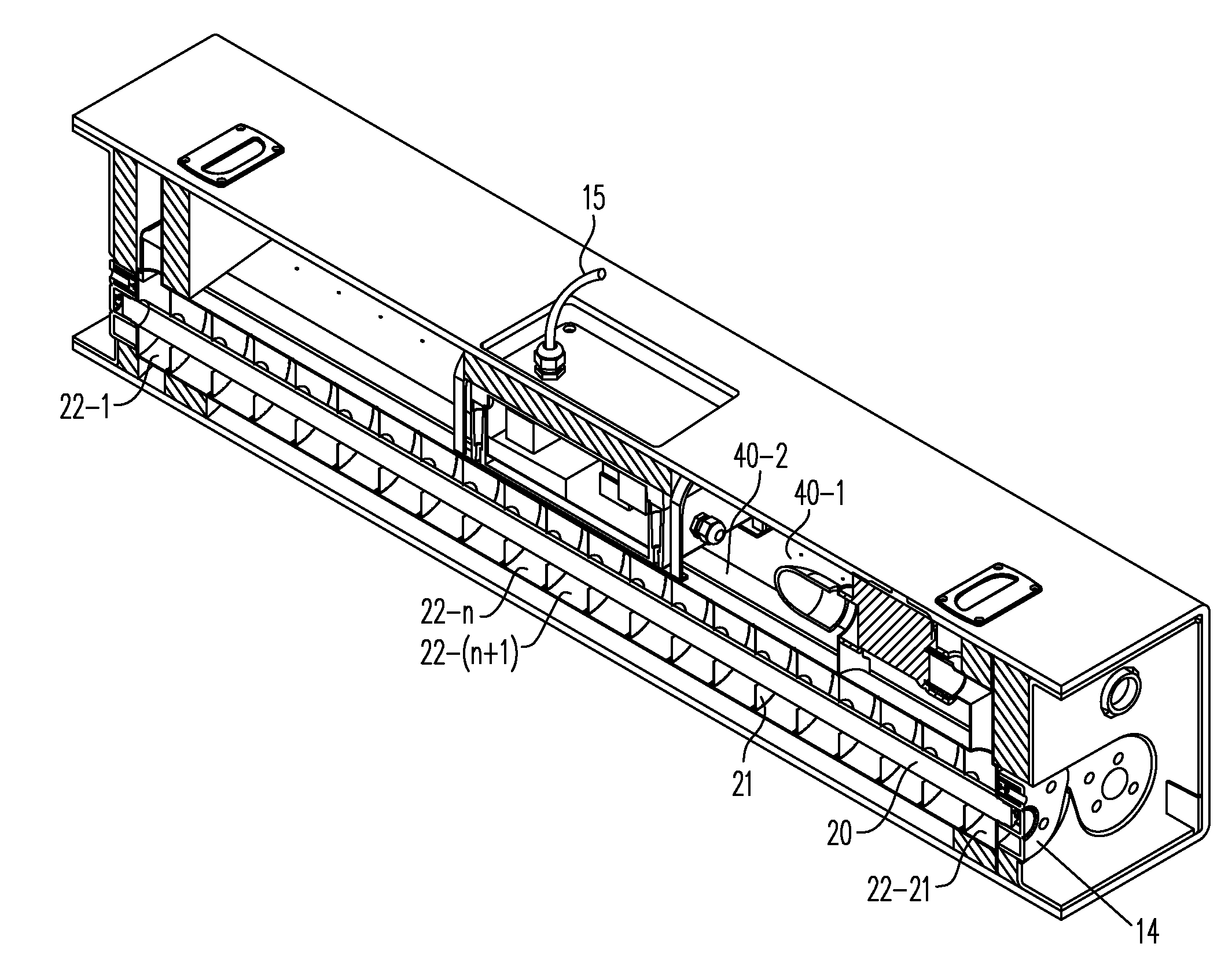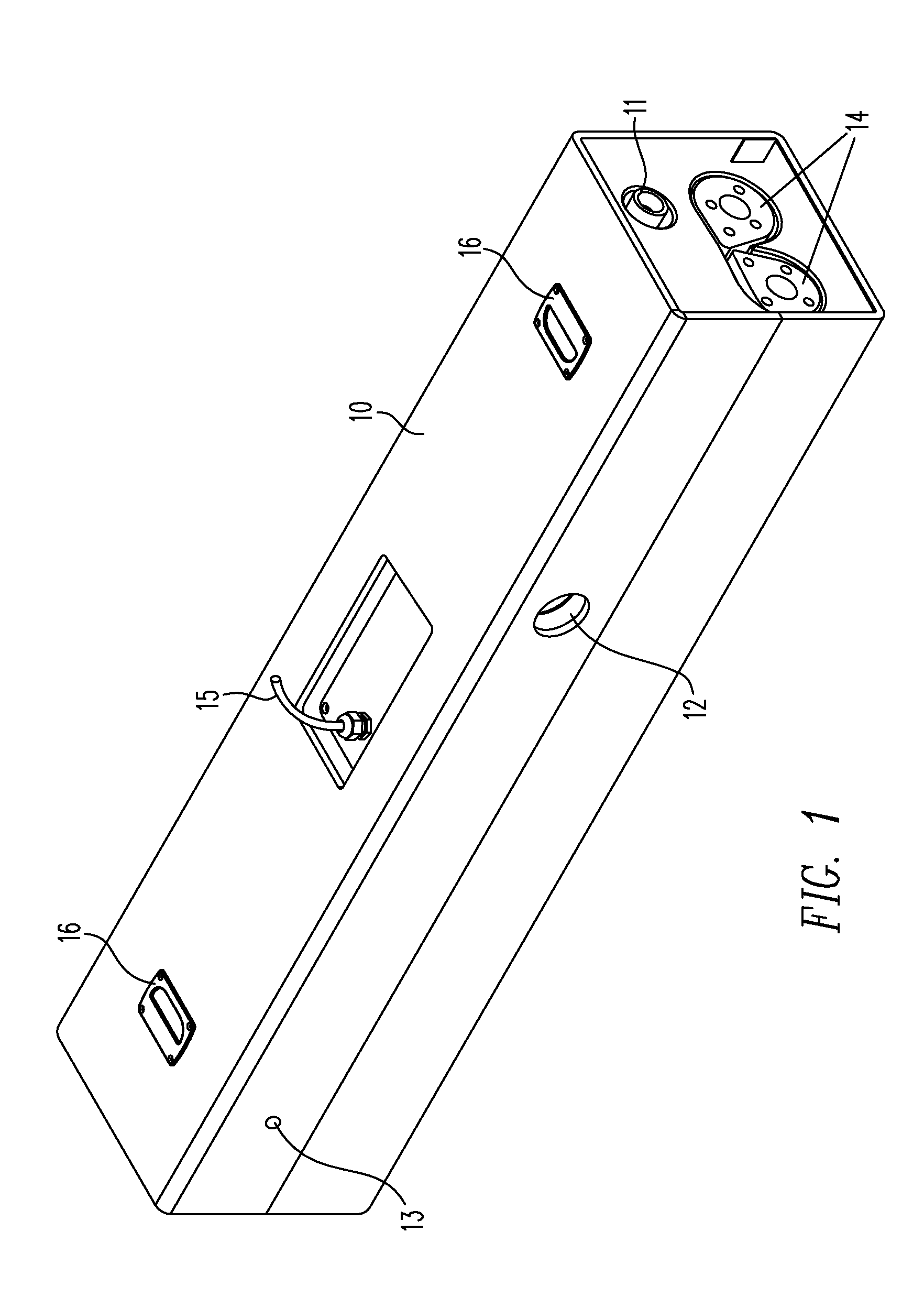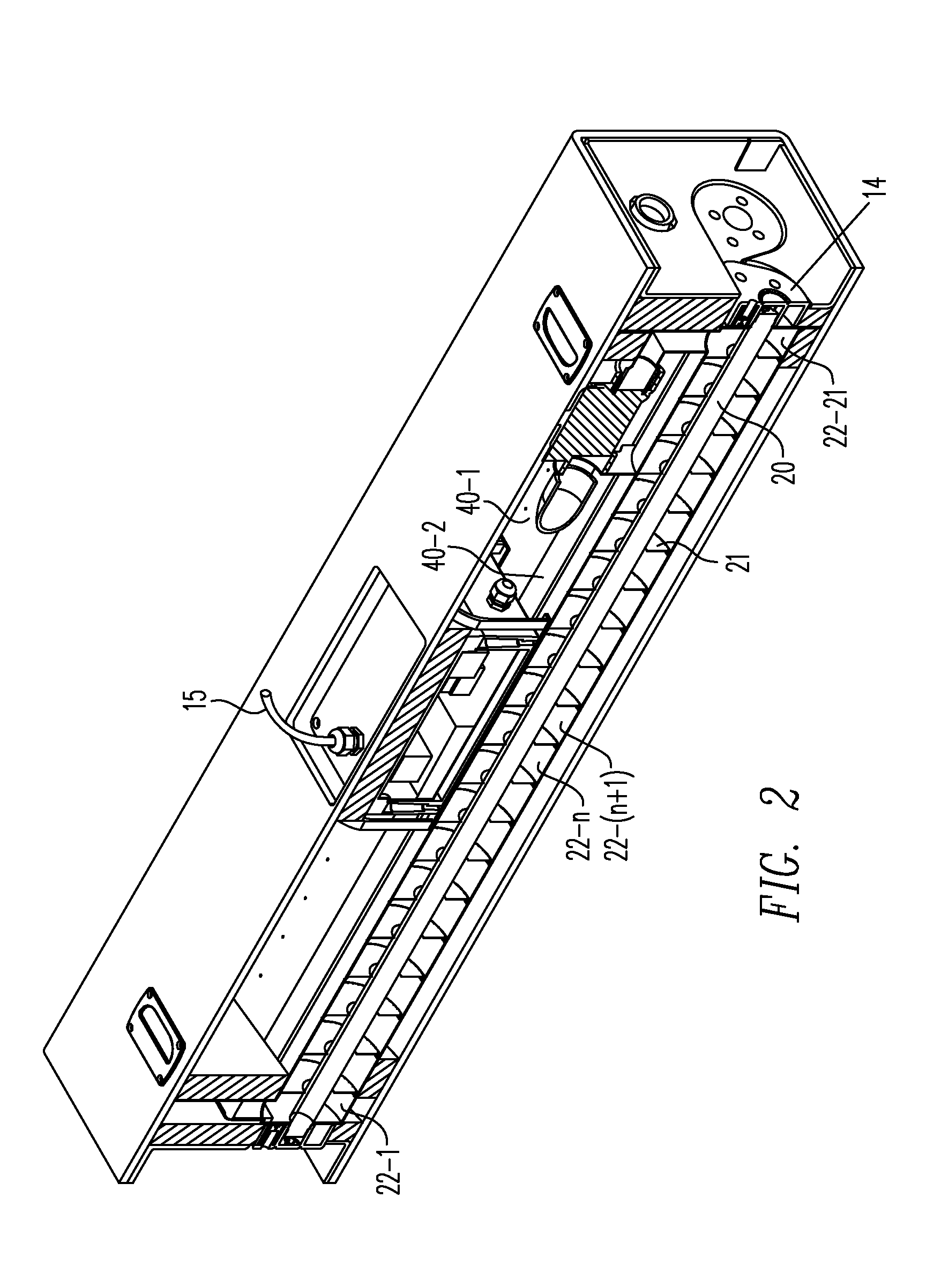Ultraviolet water purification system
a water purification system and ultraviolet light technology, applied in the field of fluid purification, can solve the problems of reducing the availability of safe drinking water, reducing the flow rate of water supply, and limiting the range of water purification technologies that can be afforded by people, and achieve the effect of inhibiting ultraviolet ligh
- Summary
- Abstract
- Description
- Claims
- Application Information
AI Technical Summary
Benefits of technology
Problems solved by technology
Method used
Image
Examples
Embodiment Construction
[0194]Although the word “invention” is used herein from time-to-time in the Background, Summary, Description of the Drawings, and Written Description, only the claims are intended to define the invention and the remainder of this document is intended to describe the background to the invention and exemplary embodiments in accordance with the invention and thus the descriptions of these embodiments are illustrative only and not limiting.
[0195]The preferred embodiment of the present invention comprises a portable unit, having a dry weight of about 50 pounds (23 kg) without pre- or post-filters. In the preferred embodiment, the system purifies between about 50 gallons (1900 liters) to about 5000 gallons (3800 liters) per hour. Of course, this invention can also be implemented in non-portable embodiments.
[0196]For a system producing 500 gallons (1900 liters) per hour, the entire 2000 gallon daily need of an average 1000 person village can be purified in 4 hours of daily operation. The p...
PUM
| Property | Measurement | Unit |
|---|---|---|
| Electrical conductance | aaaaa | aaaaa |
| Electrical conductance | aaaaa | aaaaa |
| Electrical conductance | aaaaa | aaaaa |
Abstract
Description
Claims
Application Information
 Login to View More
Login to View More - R&D
- Intellectual Property
- Life Sciences
- Materials
- Tech Scout
- Unparalleled Data Quality
- Higher Quality Content
- 60% Fewer Hallucinations
Browse by: Latest US Patents, China's latest patents, Technical Efficacy Thesaurus, Application Domain, Technology Topic, Popular Technical Reports.
© 2025 PatSnap. All rights reserved.Legal|Privacy policy|Modern Slavery Act Transparency Statement|Sitemap|About US| Contact US: help@patsnap.com



